Five major palaces from Korea’s Joseon Dynasty remain, and while each one is impressive, only the Deoksugung palace of virtue in Seoul sits surrounded by the capital’s high rises.
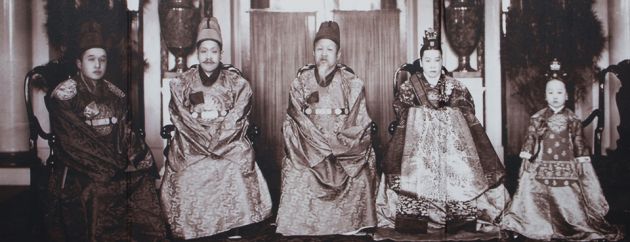
The palace was built during the mid-1400s as a private villa for Prince Wolsan. But when the Japanese Hideyoshi invasions of the late 16th century left all of Seoul’s palaces burning, the villa was converted into a temporary palace until Changdeokgung palace (창덕궁) became the royal family’s new residence.
Over the next two centuries, Deoksugung palace of virtue and longevity in Seoul was largely abandoned until Gojong, first emperor of the short-lived Great Han Empire (1897-1910) made it his official home in the 1890s.
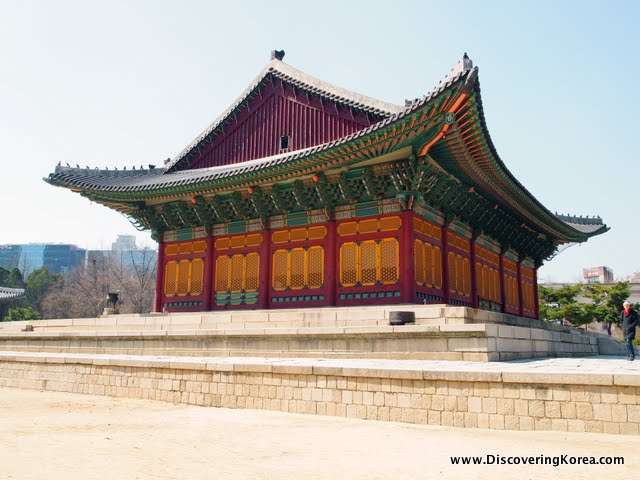
At its height, the complex comprised some 180 structures. Today, only about a dozen significant buildings remain on a footprint one-third its original.
The palace’s centerpiece is Junghwajeon Throne Hall (중화전). The throne hall is set atop a broad, two-tiered stone terrace guarded by mythical folk animals called haetae.
The original structure was two stories tall and considerably larger, but burned along with most of the palace in 1904. Inside, remarkably detailed walls and a roof featuring two golden dragons surround the throne.
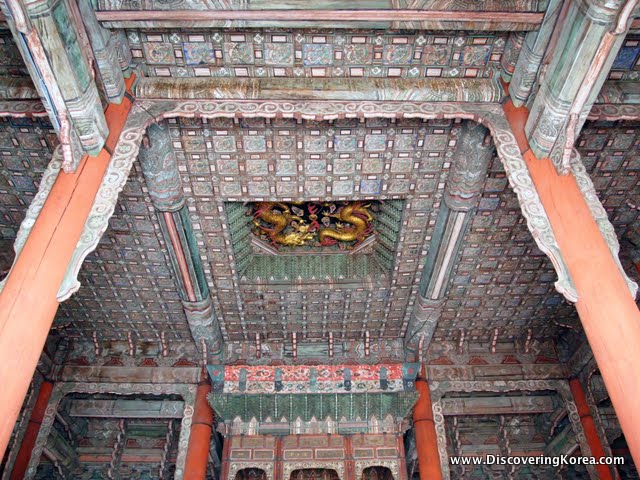
In the years immediately pre- and post Japanese annexation of Korea, the Deoksugung palace of virtue in Seoul was the site of fascinating political intrigue and tragedy as Gojong and the remarkable Empress Myeongsong, juggled the imperial designs of four world powers: China, Japan, Russia and the United States.
When the Empress was brutally murdered by Japanese assassins in 1895, Gojong fled to the nearby Russian Legation in Seoul’s historic Jeong-dong (정동) neighborhood.

The Russians were active in Korea before Japan’s annexation, and one of them, A.I. Sabatin, was a prolific architect at the turn of the century. On the Deoksugung campus, in 1900 Sabatin designed Jeonggwanheon (정관헌), a curious pavilion whose sturdy stone pillars contrast with its dainty iron railings and wood posts decorated with colorful bats, deer and pine trees.
Gojong liked to listen to music, discuss current affairs, and famously drank his favorite beverage, coffee, there. Tragically, it was also the site of an assassination attempt.
Opium-laden coffee was served to both Gojong and his son. The Emperor didn’t drink the beverage, but crown prince Sunjong did, and reportedly never fully recovered from it.
These attacks against his family, the Japanese defeats of the Chinese and Russians, along with secret deals with the Americans and British, all conspired to seal Korea’s fate.
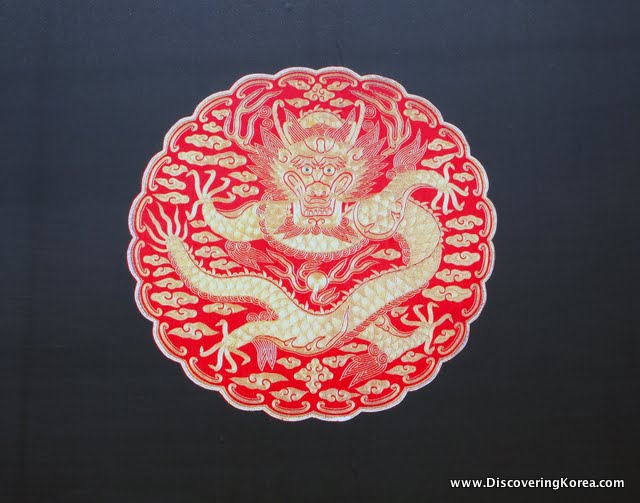
At the conclusion of the Portsmouth Peace Conference in 1905, Japan demanded that “Korea be placed at [its] free disposal.” And Korea’s 2,000-year-old monarchy ended when Japan formally annexed Korea in 1910.
Although Emperor Gojong’s efforts to maintain Korea’s independence through alliances with the west failed, the unique mix of architectural styles found at the Deoksugung palace of virtue and longevity in Seoul vividly demonstrate the Korean Empire’s tumultuous final years.
Deoksugung is also the only Korean palace I’ve seen to incorporate both foreign and domestic architecture.
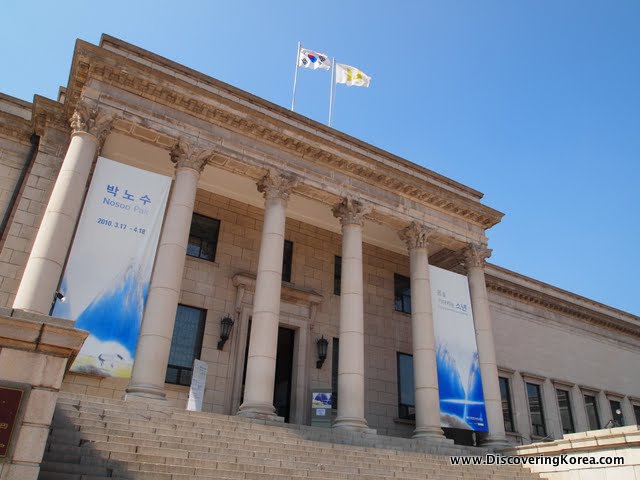
For example, Seokjojeon (석조전) is a three-story, neo-classical building completed in 1909. Originally planned for nearby Gyeonghuigung palace (경희궁), the Emperor received foreign envoys in what is now part of the National Museum of Art (덕수궁미술관).
Under renovation through 2012, a great view of the palace compound can be enjoyed from the second-level terrace.
Emperor Gojong remained at the Deoksugung palace of virtue in Seoul until his death in 1919, which sparked the March First Movement (삼일운동), a series of independence protests that spread across the nation.
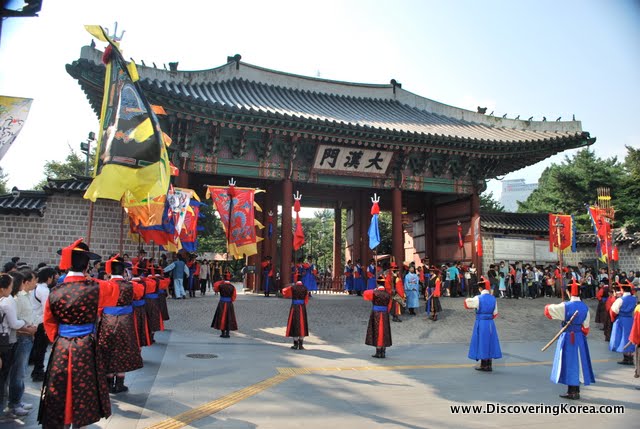
Although he didn’t see Korea regain its independence during his lifetime, in death he compelled some two million of his countrymen and women to march toward it.
Finally, if you visit the Deoksugung palace of virtue in Seoul, time your trip around one of the three daily reenactments of the changing of the palace guard that take place in front of the Great Han Gate (대한문).
The elaborate ceremony also includes a patrol from the palace, to the Cheonggyecheon stream (청계천) and Bosingak Belfry (보신각).
For Your Information…
| Open: | 09:00-21:00, Ticketing ends at 20:00, Closed Mondays |
| Admission Price: | ₩1,000 |
| Address: | Seoul Jung-gu Jeong-dong 5-1 |
| Directions: | City Hall Station (#132/#201) on Line 1, Exit 2; or Line 2, Exits 1 & 2 |
| Phone: | 02-771-9951 |
| Website: | Official Site |
About Matt Kelley
Matt Kelly is native of the US Pacific Northwest and is half-Korean by ethnicity. He lived in Korea for five years and has written hundreds of travel guides for Wallpaper, TimeOut, the Boston Globe and Seoul Magazine and was a host for several different variety shows on Korean radio and television.
